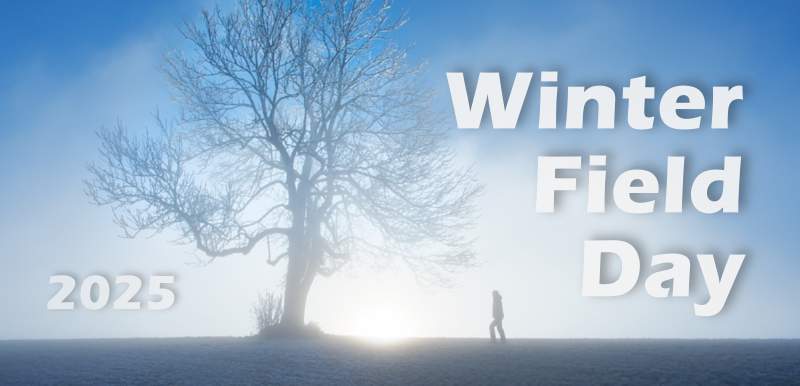Winter Field Day is an annual event that challenges amateur radio operators to set up field stations in remote locations during the last full weekend of January. The upcoming Winter Field Day is scheduled for January 25th and 26th, 2025.
Organized by the Winter Field Day Association (WFDA), the event emphasizes the importance of portable emergency communications in winter environments. Participants can operate solo or involve friends, family, or their entire club, utilizing frequencies across HF, VHF, and UHF bands with voice, CW, and digital transmissions. The event encourages the use of non-commercial power sources, deployment of multiple antennas, and establishing satellite contacts to enhance operational abilities in adverse conditions.
Winter Field Day aims to improve disaster preparedness by simulating real-world scenarios where freezing temperatures, snow, and ice pose unique operational challenges. By participating, amateur radio operators can refine their skills and ensure they are ready to provide essential communication services during emergencies.
For more information about Winter Field Day, including rules, resources, and registration details, visit the Winter Field Day Association’s official website.
Winter Field Day
Jan. 25-26, 2025
30-hour Operational Period
Begins at: 16:00 UTC (8:00 a.m. Pacific) on Saturday
Ends at: 21:59 UTC (1:59 p.m. Pacific) on Sunday
Embrace the Cold
Winter brings lower temperatures, which can reduce your time spent outdoors and on the air. However, it’s crucial not to let cold weather deter you from getting outdoors for Winter Field Day. Dress in layers, ensuring comfort and protection against the elements. Wear moisture-wicking materials that regulate temperature effectively. Consider investing in insulated boots, touchscreen-friendly gloves, and a warm hat to keep your extremities comfortable and protected. This USB-powered rechargeable hand warmer gets up to around 140 degrees and goes a long way toward keeping cold fingers flexible on a cold winter’s day.

Prepare for Decreased Battery Performance
Cold weather can impact SLA, AGM, and LiFePO4 batteries by reducing output voltage, current capacity, and overall run time. Prepare for Winter Field Day by insulating and warming batteries with a heating pad or placing them inside a pre-warmed cooler before heading outdoors in winter. Affordable heating mats intended for greenhouse use provide about 20 watts of heat and work really well for keeping batteries warm in moderate winter conditions when adequately insulated. It’s always a good idea to carry additional batteries for winter activations. If you’re looking for small, this 15AH 12.8V LiFePO4 from Lampword is a lightweight battery that really performs. If you need something a little bigger, a Redodo 50AH Smart LiFePO4 Battery with Bluetooth is an excellent choice.
Antenna Maintenance
Winter weather can lead to ice accumulation and water intrusion on antennas and connections, which can decrease performance and increase your SWR. Inspect antennas and especially coax connections for signs of corrosion or ice buildup prior to Winter Field Day. Ice can be safely removed with this amazing de-icer spray from CRC. To seal antenna connections from the elements, wrap them with this self-sealing silicone tape.
Mobile Operations
Don’t let winter limit your operations to sitting at home. Explore mobile options such as operating from a vehicle in a park or from a higher elevation to increase your chances of making contacts. If using an HT in a vehicle, consider this NMO-style magnet mount from HYS is a solid start in a system of compatible and interchangeable antenna parts. This Nagoya NMO lip-mount attaches to the edge of your trunk and is fully adjustable.
Stay Visible
In the winter, visibility can be limited due to snowfall or foggy conditions. To ensure safety and visibility, apply reflective tape to clothing and carry a small handheld flashlight. Try one of these LED work lights with magnetic base. Attach it right to the chassis of your rig, provides two levels of brightness for working your log book, reading maps, or completing ICS forms at night or during dark winter days.
Plan Ahead
Before heading out in winter, make sure you have all the necessary equipment and supplies. Pack extra batteries, authentic Eaton Bussmann replacement fuses, cables, and tools to address any unforeseen issues that may arise during your operation. A portable power source such as a solar charger can help maintain battery voltage while working from an outdoor location in winter. This foldable, packable 100-watt solar panel is ideal for outdoor use on a sunny winter day.
Stay Informed
Keep up-to-date with local weather conditions before and during your winter outings. Monitor weather forecasts for any severe weather events that may impact your operation or safety. Tune to NOAA Weather Radio or use the Weather Alert function of your ham radio to know when it’s time to pull the plug and head for high ground. Always be aware of the potential for ice storms, heavy snowfall, and freezing temperatures. If hiking to remote areas, use APRS to beacon your location so others can track your progress.
Have Fun
Above all, remember that ham radio is all about having fun, learning, and connecting with others in the amateur radio community. Embrace the winter weather as a unique challenge and opportunity to enhance your skills and enjoy your day playing radio.
By following these tips and strategies, you can confidently head out for a winter day of radio operations. So bundle up, grab a cup of hot coffee, get outdoors, and get on the air!














